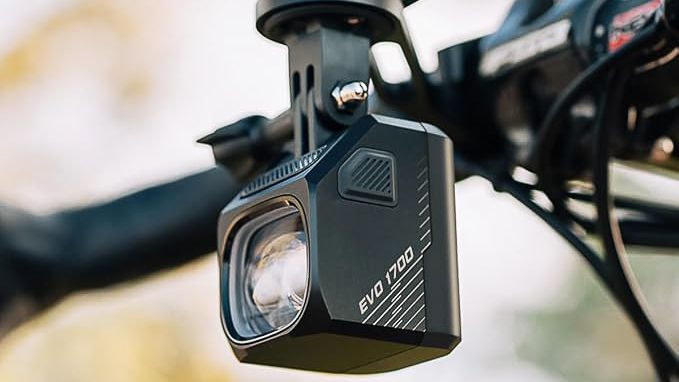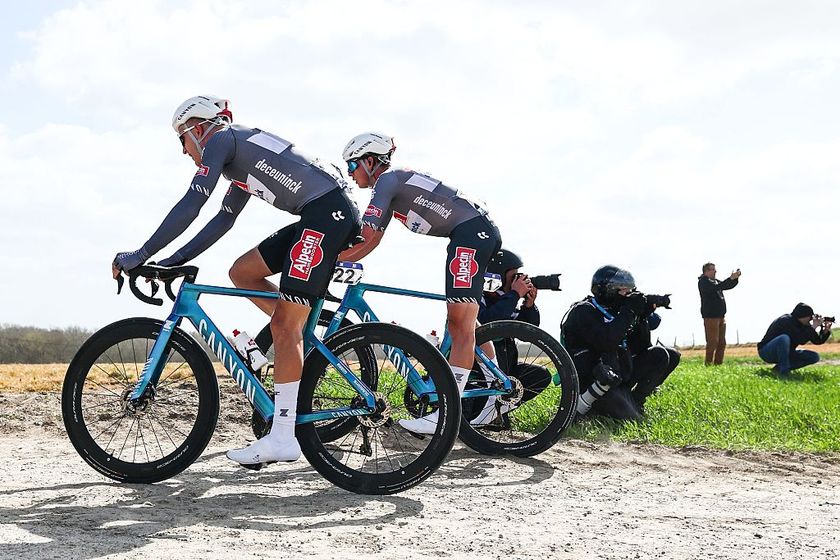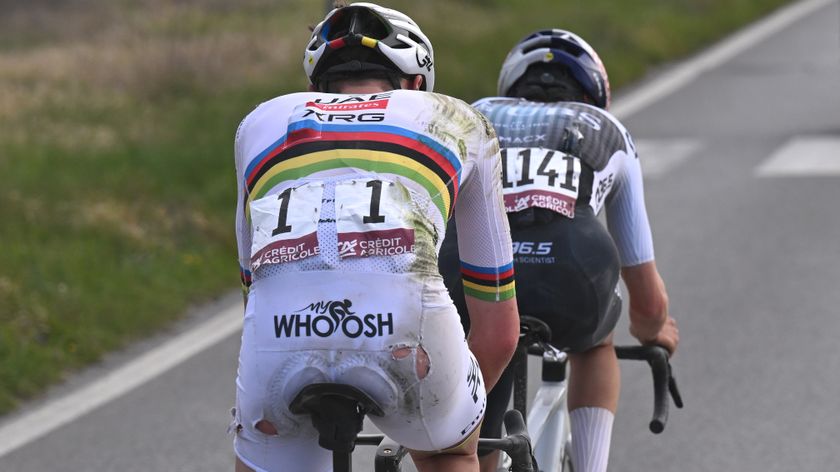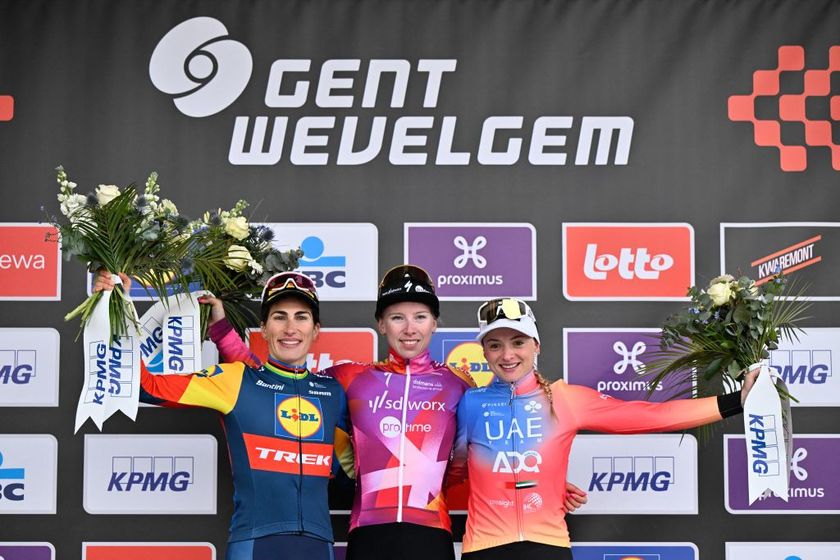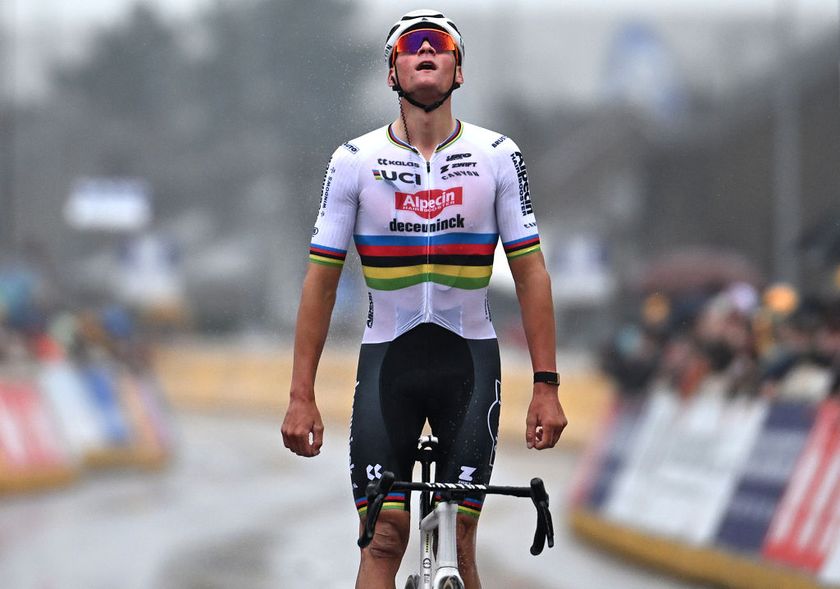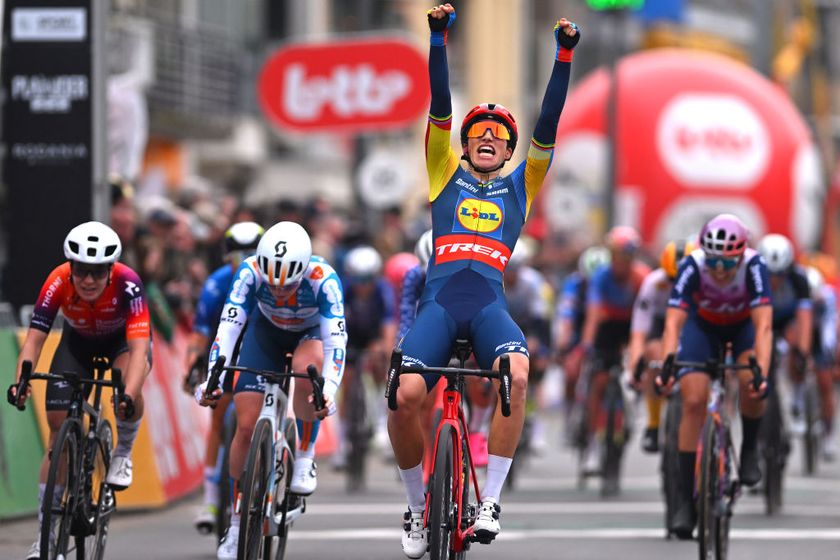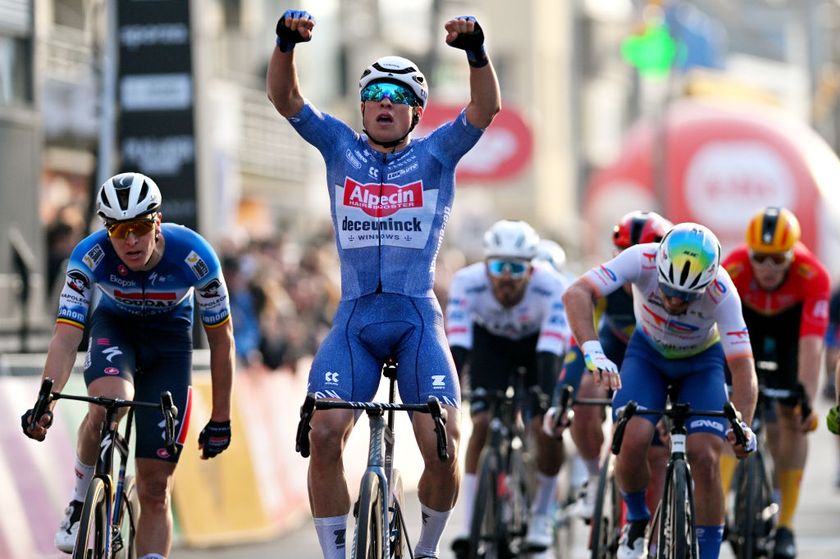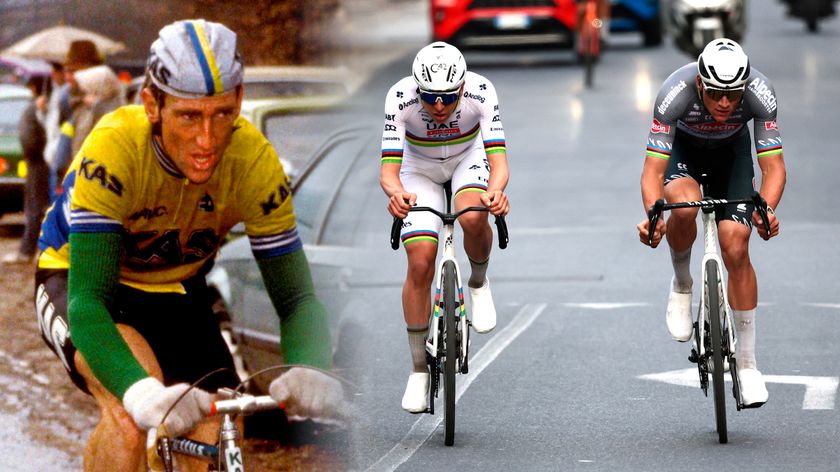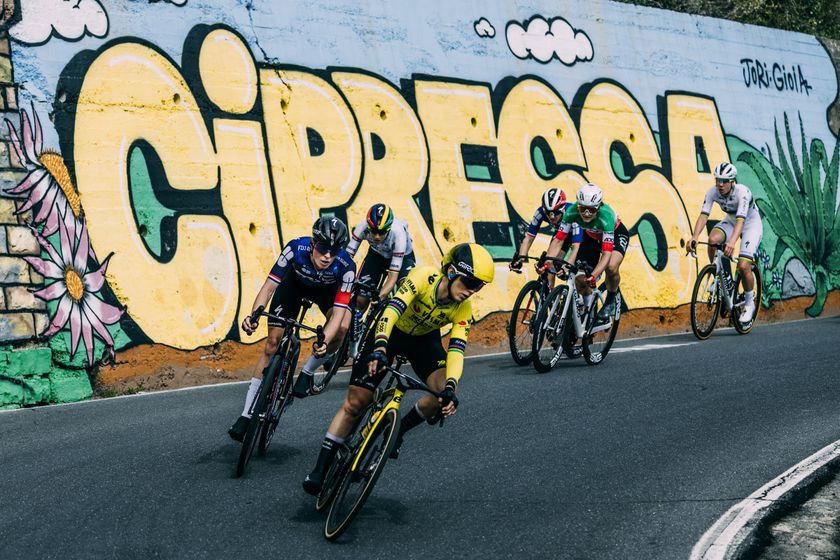2013 Vision wheels - First look
Plus initial ride impressions of new Metron 81s


























This article originally appeared on BikeRadar
Vision is best known for their aero bars but they're aiming to become big players in the road wheel market, too. All of their wheels are designed and assembled in-house. This, the company explained during a refreshingly honest presentation of their 2013 line on the Spanish island of Mallorca, gives them a performance edge and lets them retain ultimate control.
PRA hubs
Literally at the heart of Vision’s new wheels are their new PRA – Preload Reduction Assembly – hubs. In a clever meeting of mechanics and aerodynamics, these have a threaded collar that allows bearing preload to be adjusted with the wheel in place (independently of the quick-release and hub assembly) and also cheats the wind. The result, according to Vision, is a front hub that's 20g lighter and 10 percent faster than the previous generation. The preload adjustment, carried out using a 2mm Allen key, prevents overloading of the wheel bearings, thus increasing lifespan and ensuring smooth rotation.
The rear hub now boasts a wider stance following feedback from professional riders who asked for more lateral stiffness. By moving the non-driveside flange outwards by 10mm, wheel stiffness has been increased by up to 26 percent. A redesign of the hub internals has banished steel for a totally alloy freehub body, saving 20g and reducing inertia. Super-smooth running is taken care of by four easily replaceable sealed cartridge bearings in the rear hubs and two at the front, all mounted on 17mm diameter axles.
Metron 81
But enough about the hubs – it was Vision’s new carbon rims that created the biggest stir at their 2013 launch, and after five years of development look well worth the wait. The 88mm deep Metron 90 is succeeded by the 81mm deep Metron 81. In line with current thinking, it has a fairly rounded, foil-profiled rim – 24.5mm at its widest and 23.7mm at the braking surface – and includes the tyre in its overall shape to create a turbulence-reducing whole.
Get The Leadout Newsletter
The latest race content, interviews, features, reviews and expert buying guides, direct to your inbox!
The company ran more than 900 computer simulations with computational fluid dynamics software and then made more than 100 test rim profiles before concluding that this was the fastest. In wind tunnel tests against dozens of competitors' wheels, they found the Metron 81 to be closely competitive with Zipp’s 808 – both had an edge under differing conditions.
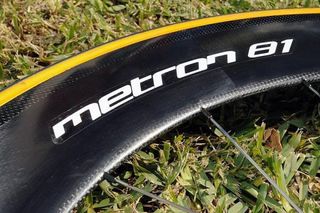
Vision's Metron 81s have unidirectional carbon fibre rims with a 3K carbon braking surface
Vision say the advantages of the new rim shape are plentiful. The wider tyre bed makes the tyre more stable and gives a more rounded tread profile, which offers better grip and therefore faster cornering. The rounder rim profile suffers less from side force, making it more stable in crosswinds. Improved construction methods, the shallower rim depth and a reduced internal diameter have brought rim weight down from 600g to 475g, and aerodynamics have been improved, too; the Metron 81 creates 63 percent, or 12 watts, less drag at a 0-15° yaw angle (angle to airflow) then the Metron 90 did at only 10°.
The Metron 81 is available for tubular tyres only, with 18 aero bladed spokes laced in a radial pattern to a carbon hub up front, and 21 at the back in a 2:1 pattern, radial on the non-drive side and crossed twice on the other. Claimed weight is a scant 1,495g, excluding the very satisfying carbon quick-release skewers. Vision say this makes them the lightest wheels in the 70-80mm depth category by 30g. Supplied with the wheels are carbon-specific brake pads, valve extenders and wheel bags. They should appear in the pro peloton from March and make it to general sale later in 2012, with pricing still to be confirmed.
Having heard all about them, we were itching to try the wheels out for ourselves. On a sunny but breezy day near Alcúdia we thought we might be in for a battle, but from the off it was clear how light and stiff the Metron 81s are, and seemingly immune to crosswinds. Acceleration was superb for such a deep rim, and incredibly satisfying too, with the swishing noise of deep hollow carbon and tubular Vittorias egging us on until we could sprint no more.
The weight is no hindrance on climbs either – they come in at less than the benchmark Mavic Ksyrium Elites – and descending, although less nimble than on a shallower rim, was solid due to the wide rims aiding grip, feel and stability. All in all, the Metron 81s are hard to fault and seem like they'd make an ideal wheel for time trials and powerful riders.
Metron Disc
An unexpected surprise at the 2013 presentation was the asymmetric shape of the new Metron Disc. Unlike Vision's current, conventional, flat disc wheel, the latest one takes a Metron 90 and adds a silicone-bonded fairing to each side to seal in the spokes. On the drive side, the uni-directional carbon fairing follows the spoke path, while on the non-drive side it has a convex bulge. This means that at first look the Metron Disc could pass for a normal disc wheel, but with the advantage that it can be straightened like a standard Metron 90. The only time Vision would need to assist is to replace a broken spoke, when they can remove and replace the fairings to allow the repair.
Because of the new PRA hub, the latest Metron Disc is stiffer than the previous model, and the faired construction saves 180g, giving an overall weight of 1,100g. When the Metron 90 is replaced by the Metron 81, the disc will be based on that wheel instead, and should come in under 1,000g. When asked if the wheel was UCI legal, Vision said that because the fairings are bonded to the rim and non-removable, the design has already been approved.
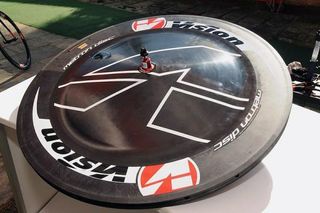
The new Metron Disc has an asymmetrical, faired design but is said to be UCI legal
Other wheels
Continuing the carbon party were the Trimax Carbon TC50s, which are 50mm deep and use a 23mm rim. These wheels are built tough, with PRA hubs, 18 front and 21 rear Sapim aero spokes and external nipples for simple maintenance. At 1,450g a set they're still very light, and during pro team testing last year were ridden with a flat tyre over cobbles for some time with no damage. While they have a more conventional aero profile than the 81s, they're still mighty fast tubular-only wheels.
Looking like a great wheel for climbing or the northern Spring Classics, the Trimax Carbon TC24 has an ultralight 24mm deep tubular rim, which is 23mm wide and offers a great platform to make the most of the available grip. With PRA hubs and 20 front and 24 rear aero spokes, the TC24s tip the scales at 1,250g and the 3K carbon used means they're very strong. In use they instantly feel incredibly surefooted because of the wide rims, and the lack of mass makes for very lively, agile wheels that accelerate rapidly.
Still laterally stiff but offering more comfort than the deeper section rims, the TC24s are very versatile wheels that could also excel at cyclo-cross. They were so much fun that they brought out the hooligan in us, encouraging us to flick the bike left and right, surging, braking and trying to upset them. We couldn’t, but we enjoyed trying.
Crossing the divide between carbon and alloy rims, Vision’s Trimax T42 CSI (Carbon Structural Integration) clinchers are a hybrid, with an alloy rim bonded to a structural unidirectional carbon element to provide the aero shape. Some 42mm deep and 21mm wide, the T42s run on PRA hubs with 18 front and 21 rear aero spokes, and weigh in at 1,720g. Part of the 2012 range, the T42s are firm but not uncomfortable across broken surfaces, handle predictably and are keen to accelerate. On the climbs they performed well, keeping us in touch with more exotic hardware, and refused to be worried by crosswinds. Lateral stiffness was borne out by there being no trace of rub against tightly set brake pads, even when sprinting at full power.
Vision’s premium alloy aero wheelset is the Trimax T30. Touted as a time trial or training wheel, its 30mm rim depth and 18.3mm width allows for a variety of uses. With PRA hubs and 20/24 aero spokes, a pair weighs 1,520g. The T30 is available with a tubular rim and would make an ideal wheel for rough roads or winter cyclo-cross racing.
Using a different hub design with only two rear bearings and Shimano-only compatibility, the Team30 is an entry-level 30mm deep alloy rim with 20/24 aero spokes and a CNC machined braking surface. At 1,750g it's a solid training wheel, and is also available in a 650c size. Finally, the new Team27 has a 25mm alloy clincher rim and uses the same hubs as the Team 30, along with 20/24 aero spokes. A weight of 1,950g makes these general, no-frills training wheels.
Other components
Also on show at the launch was the Vision TFA (The Fastest Aerobar) setup, complete with Metron trigger-style aero shifters. Derived from many years of aero bar development, the main bar has a one-piece carbon construction with integrated brake levers, multi position armrests and replaceable carbon extensions. It's UCI legal and is adjustable for differing steerer tube angles. Total weight is 818g, and Vision claim it produces three percent less drag than any of their other aero bars.
The Metron shifters fit on the end of the aero extensions. The trigger allows you to upshift up to three sprockets at once, while down shifts are actuated by a simple press of the button forming the tip of the shifter. At 198g per pair, the Metron shifters are very neat, with their shifting mechanism housed inside the aero extension, and the cable running cleanly through to exit at the rear. They're compatible with 10-speed Shimano drivetrains and with Vision's own Metron derailleurs and cassette. Asked about the possibility of a full road groupset to complement this time trial kit, Vision said it was something they were working on.
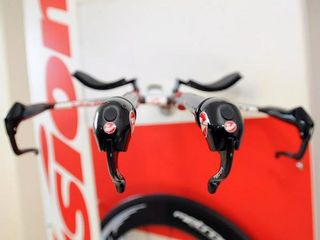
Head-on view of Vision's Metron TT trigger shifters and TFA bar setup
